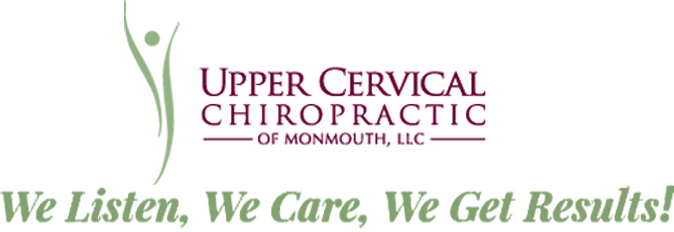Upper Cervical Chiropractor for TMJ in New Jersey
The QSM3 Approach for TMD Management
Traditional methods of care for TMD tend to focus on relieving symptoms rather than addressing the root of the pain. At Upper Cervical Chiropractic of Monmouth, LLC, we'll build out a care plan that emphasizes the use of gentle touch to adjust the vertebra at the base of your skull so your body can heal naturally.
The mechanics of the upper cervical spine and TMJ are intimately connected. The nerves controlling the muscles that move the jaw originate in the upper neck. Poor alignment of the upper neck or past trauma to the cervical spine may impact the nerves that control the muscles around the jaw.
Excess muscle tension around the jaw can lead to abnormal movement or tracking of the jaw, resulting in clicking, pain or a decrease in the size of the opening. Calculated and light adjustments to the upper neck may relieve the pressure on these nerves, allowing for proper movement. In addition, our doctors may utilize other chiropractic methods to gently realign the TMJ itself.
The care plans we oversee do not require cracking or twisting your spine. Instead, we apply the Quantum Spinal Mechanics3 (QSM3) technique to focus on subtle adjustments to the upper spine. Adjustments to the top of your spine can have an effect on the whole body, including reducing stress on the nerves near the spine, neck and face.
Upper Cervical Care for TMJ Relief
Our upper cervical chiropractors for TMJ care about your suffering and quest for relief. Your first appointment will include a consultation so we can tailor a custom plan that's appropriate for you. Our doctors will also gladly coordinate with your dentist if requested.
Your doctors at Upper Cervical Chiropractic of Monmouth will take any necessary X-rays and perform a thorough examination of your spine and TMJ. Once we review your X-rays, we'll schedule you an appointment to return for a first adjustment.
Schedule an Appointment With One of Our Upper Cervical Care Chiropractors for TMD
Our chiropractors for TMJ relief look forward to designing a care plan to improve your well-being. To start the appointment scheduling process, complete our new patient forms online.
You deserve to feel your best when relaxing, running errands or heading to work. For some people, face and jaw pain get in the way. Temporomandibular joint (TMJ) disorder, also known as TMD, can make it hard to do basic tasks like eating, sleeping or talking. You can visit Upper Cervical Chiropractic of Monmouth, LLC for nonmedicinal TMJ care.
What Is TMD?
Temporomandibular joint disorder refers to a wide range of jaw conditions that result in pain throughout the face, head or mouth. The temporomandibular joints sit just in front of your ears, and they act as hinges for opening and closing your mouth as well as moving the jaw in any direction.
A temporomandibular joint disorder occurs when muscles around the face and jaw are overworked, resulting in increased pressure on the facial nerves. Some common causes include clenching your jaw or grinding your teeth excessively. Whether yours is a short- or long-term condition, an upper cervical chiropractor for TMD can help you manage your symptoms and may correct the problem.
TMJD and Dizziness Relief
Gianna suffered from severe TMJD, dizziness, and neck pain. The pain was so severe that it interfered with everything! Doctors and dentists offered treatments and appliances that did not work, or they dismissed her. Several doctors recommended TMJ surgery since she could not open her mouth completely. Her symptoms have all resolved after a short while under Upper Cervical Chiropractic care. She was able to get married, dance at her wedding, and go horseback riding on her honeymoon. Listen to Gianna's inspiring story of healing and recovery.
7 Common TMD Symptoms
The most common symptom of TMD is jaw pain or soreness. Most patients experience this symptom in the morning or early afternoon — an indicator that they may have been clenching their jaw overnight.
Symptoms of TMD may also include the following:
- Migraines
- Ringing in the ears
- Earaches
- Jaw popping or clicking
- Difficulty moving the jaw
- Sudden tooth sensitivity
- Dizziness

Reviewed by Dr. Larry Arbeitman
Prior to founding Upper Cervical Chiropractic of Monmouth, LLC in 2005, Dr. Arbeitman graduated Magna Cum Laude, second in his class, from Logan College of Chiropractic in St. Louis, Missouri. He obtained his first Bachelor of Science degree in Kinesiological Sciences from the University of Maryland at College Park and a second Bachelor of Science degree from Logan College.
The doctor is licensed in the state of New Jersey and has met the requirements by the National Board of Chiropractic Examiners. Throughout his educational career, he was a multiple scholarship recipient and accumulated several awards for academic achievement and exemplary clinical performance.
Dr. Arbeitman is an active board member of the Q-foundation: the non-profit arm of the Quantum Spinal Mechanics 3 (QSM3) Method.
As an author of The Gift of Hope: The Path to Healing Through Upper Cervical Chiropractic and Facial Pain: A 21st Century Guide: Chapter 5.1 Upper Cervical Chiropractic Care, Dr. Arbeitman brings awareness to the Upper Cervical Chiropractic method and the conditions it can help.
